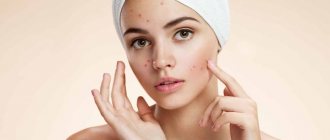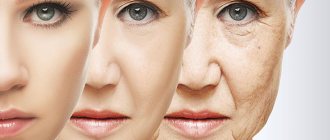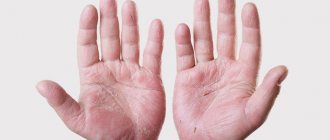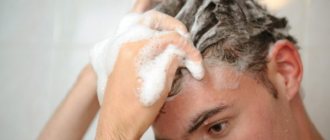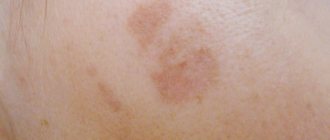Causes
Cooperosis on the nose is a consequence of the inability of individual vessels to contract normally. The vessels expand too much, and at the same time they cannot narrow back.
Acquired rosacea
11 best creams and ointments for rosacea on the face
People with dry and thin skin are predisposed to telangiectasia, but there are other factors:
- The likelihood of rosacea occurring is higher if the disease was observed in parents.
- If a person spends too much time under the scorching sun or visits solariums, then excessive exposure to ultraviolet radiation can damage the vascular walls.
- Being in an environment that is too hot or cold. Even a single hypothermia can cause vasodilation. People forced to stay in the cold for a long time often suffer from rosacea. The disease also occurs in those who work at high temperatures. Representatives of professions such as metallurgist or bakery worker are at risk.
- Bad habits. A distinctive feature of the appearance of any “heavy drinker” is the red web of blood vessels on the skin of the face. But even moderate alcohol consumption increases the likelihood of developing rosacea. Cigarettes and facial microvessels are harmful.
- Rough impact on the skin during cosmetic procedures: serious damage is caused to blood vessels.
- Liver diseases (hepatitis, cirrhosis, etc.).
- Nutrition is an important factor. To prevent rosacea, you need to exclude unhealthy foods from your diet (fatty foods, confectionery, sugary drinks).
- Rosacea.
- Prolonged depression and negative emotional experiences are common causes of rosacea. Due to severe stress, the pressure in the blood vessels increases, having a detrimental effect on the skin.
- Hormonal disorders, pathology of the cardiovascular system and gastrointestinal tract. In such a situation, rosacea acts as a unique way for the body to announce serious problems.
Congenital telangiectasia
The development of rosacea can be caused by some diseases:
- Ataxia-telangiectasia (Louis-Bar syndrome) is a rare neurodegenerative disease that is inherited.
- Rendu-Osler-Weber disease (hemorrhagic angiomatosis).
- Sturge-Weber disease is a severe pathology that occurs in 1 person in 50 thousand.
It is almost impossible to get rid of telangiectasia in the presence of such a pathology. It is only possible to eliminate the external manifestations of the disease from time to time.
Features of blood supply to the skin
One of the main features of the blood vessels of the skin is their ability to reflexively narrow or expand from external influences on nerve endings.
Nerve endings are irritated by exposure to high or low temperatures or any mechanical actions (impact or friction). They are also affected by certain chemicals. Blood vessels in the skin can expand or contract due to the emotions a person experiences: shame, joy, anger, excitement, etc.
The skin contains a large number of arteriovenous anastomoses, which play a significant role in thermoregulation. Most of them are found in the skin of the ears, the tip of the nose, and on the fingers and toes. Also, the blood supply to the skin affects the proper functioning of nerve endings and muscles.
Who to contact
How to get rid of rosacea on the face
Even knowing the common factors that lead to rosacea, it is difficult to figure out on your own why dilated blood vessels spoil the appearance of the face. The best way to find out the true cause of the problem and cure it is to seek medical help and undergo a full examination. For reliable diagnosis, you need to consult an endocrinologist, dermatologist, phlebologist, neurologist. This way, it will be possible to act quickly and successfully if it turns out that the cause of rosacea is a serious illness.
Location of blood vessels
The skin has two networks of blood vessels - superficial and deep.
The deep vascular network delivers blood to the hair follicles and sweat glands. It is formed by arteries coming from the subcutaneous tissue. In the dermis they branch into smaller blood vessels.
Further from this vascular network, smaller blood vessels extend perpendicularly upward, which form the superficial vascular system located in the papillary layer of the dermis parallel to the skin surface.
This network delivers blood to the sebaceous glands, sweat ducts and the top of the hair follicles.
Arterial capillaries, originating in the deep vascular network, gradually pass into the cutaneous veins. There are four types of venous plexuses. There are also two networks of lymphatic vessels in the skin: deep and superficial.
Treatment
To remove rosacea on the wings of the nose, it is very important to monitor and care for the skin. A careful attitude will help in solving the problem with blood vessels:
- The composition of the cosmetic product should not include alcohol, aloe and eucalyptus, mint and menthol, as well as honey.
- Do not use low quality care products. Cheap, poorly made products are harmful to the skin with rosacea.
- Rub the ointment into the spider veins carefully and effortlessly.
- The towel should be made from natural materials. You need to wipe your face with light, gentle touches, without rubbing the skin.
- Dieting. It is recommended to give up sweets, sour cream, yogurt and cheese, tomatoes and citrus fruits. This will make it much easier to remove rosacea.
- Maintaining the supply of vitamins (C, K, P) and minerals. You need to ask your doctor exactly which vitamin-mineral complexes you should take.
- Maintaining a healthy lifestyle is a primary condition for recovery . Running, cycling, swimming, long walks in the fresh air, fitness and yoga classes, as well as healthy sleep are important components of recovery from any illness. You definitely need to give up alcohol and cigarettes.
Various medications are used to treat rosacea. Creams are prescribed and oral medications are prescribed:
- Troxevasin - constricts blood vessels, restores their elasticity and strength.
- Ascorutin - contains ascorbic acid and performs the same function.
- Adrenaline is good for constricting blood vessels.
In clinics, telangiectasia is treated by performing cosmetic procedures:
Laser treatment
Popular and painless method. The vessel is heated by a laser beam, quickly eliminating rosacea. There is no need for repeated procedures, and there are no wounds, scars or dimples left after the manipulation.
Ozone therapy
An oxygen-ozone mixture is injected under the skin, returning the capillaries to their normal appearance. There are no ugly marks or scars left on the face. With the help of such a cocktail, blood vessels are strengthened, narrowed and returned to normal. However, it is difficult to stop highly progressed vascular rosacea using this procedure, although it can be slowed down .
Photorejuvenation
Impact on injured vessels using pulses of light energy. Before the procedure, the facial skin is cleansed, and the patient is wearing protective glasses. Flashes of light painlessly “dissolve” blood vessels, leaving no traces. After 5-7 sessions, the capillary network on the nose usually completely disappears. There is a 4 week gap between sessions. In addition to treatment, the procedure has a general toning, strengthening and rejuvenating effect.
Mesotherapy
A series of subcutaneous injections through which beneficial substances are introduced into an unhealthy vessel. Injections are carried out manually or with a special device. In this way, vitamins, medicines, microelements, collagen and other medicinal mixtures are delivered under the skin. The pain of the procedure depends on the sensitivity of the person.
How to remove capillaries on the face using photorejuvenation?
Photorejuvenation is a modern cosmetic procedure during which defects are removed using a high-intensity light source. The procedure is more effective when compared with laser removal, but you will notice the result after 2-4 sessions.
This type of rejuvenation allows you to make the skin more elastic, returning its natural color and elasticity. You will forget about vascular networks on your face for a long time if you follow the cosmetologist’s recommendations!
Traditional methods
At home, you can use traditional medicine recipes.
Potato mask
- Option #1. To prepare the mask, you need to peel two potatoes, then grate them on a fine grater. Apply the mixture to your face. When the mask begins to dry, apply a second layer, wait 20 minutes and rinse.
- Option #2. Grate one peeled potato on a fine grater and mix with oatmeal. After 5 minutes, apply the mixture to the capillary mesh, wait 20 minutes, then rinse. Potato masks improve the appearance of the face and help blood vessels become healthy again.
Berry masks
Nature offers many gifts with healing properties. In the summer, fresh and ripe berries are always at hand at home, from which you can also make masks.
- Option #1. Grind strawberries and raspberries, add boiled water to the mixture and after the mask has cooled, apply it to problem areas.
- Option #2. Potato starch (one teaspoon), lingonberries, raspberries, strawberries, sea buckthorn berries. Mix everything and apply rosacea on top of the mesh.
Nutrition for rosacea
You should make changes to your eating habits, eliminating foods that provoke the appearance of rosacea. Harmful foods in this case include spicy and salty foods, canned food, alcohol, beer, coffee. It is necessary to minimize the amount of foods with a high fat content: cheeses, liver, sour cream.
- Take vitamins or dietary supplements containing vitamins C, P, K and silicon, antioxidants, Omega 3 and 6 fatty acids, blueberry, chestnut, arnica, mimosa, myrtle, echinacea, grape seed oil, rutin and collagen extracts.
- They significantly influence the condition of blood vessels, regulate capillary permeability, and strengthen the walls of blood vessels.
- Start eating foods high in silicon and vitamins C, K and P.
Silicon is present in large quantities in Jerusalem artichoke, buckwheat, oatmeal, beans, peas, and corn. Dishes from these products should be present in your diet every day!
Foods that strengthen blood vessels: spinach, currants, cabbage, rose hips, tomatoes, blueberries, rowan berries, walnuts, oranges and lemons, and it is better to eat them with the peel containing a large amount of vitamin P.
Vascular network on the face: the best cream for capricious skin
There are many substances that are effective for caring for couperose skin. They are designed to prevent inflammation, strengthen blood vessels and increase their tone, as well as eliminate existing problems. They also hydrate and protect the skin from external factors such as radiation or temperature changes. These substances include:
- Hesperidin is a flavonoid found in citrus fruits that reduces the permeability of blood vessels.
- Diosmin is a flavonoid that seals blood vessels, increases their tone, has an anti-inflammatory effect, improves lymph circulation and thus has an anti-edematous effect.
- Rutin – has sealing properties of blood vessels, enhances the effect of vitamin C and is often used in combination with it.
- Vitamin C – improves skin immunity, stimulates collagen synthesis, tightens blood vessels and accelerates their healing.
- Horse chestnut - tightens and tones the walls of blood vessels, eliminates swelling and improves blood circulation.
- Violet tricolor - seals blood vessels, regulates metabolism in cells, has an anti-inflammatory and bactericidal effect.
- Barbiturate – reduces vascular permeability, improves blood circulation, moisturizes and heals.
- D-panthenol – soothes irritations and moisturizes the skin.
- Mountain arnica – tightens and constricts blood vessels, relieves inflammation.
- Witch hazel (witch hazel) – contains tannins and flavonoids, tightens blood vessels, improves blood circulation and prevents inflammation, also has an antibacterial effect.
- Bisabolol (chamomile extract) – has anti-inflammatory and antibacterial effects, soothes irritated skin, facilitates healing and prevents inflammation.
- Vitamin K - helps heal wounds, regulates blood clotting processes, improves skin color.
- Allantoin – heals, has an anti-inflammatory effect, moisturizes the skin.
Modern techniques for removing rosacea on the face
In the modern world, there are a large number of hardware techniques, medications and folk remedies aimed at combating spider veins. What to do in a given situation is decided by the doctor after studying the clinical picture.
For your information, all methods are based on gluing capillaries or changing the structure of connective tissue.
If it is difficult to choose, the first thing to do is to choose the most gentle methods that are not accompanied by side effects. If unsuccessful, you can move on to stronger methods.
Hardware treatment:
- Electrocoagulation. This method neutralizes the symptoms, so it cannot be called a treatment in the literal sense. Visible blood vessels on the face are removed using weak current discharges. The blood vessel no longer “works”; therefore, it is not visible. The number of sessions depends on the degree of damage. Sometimes one procedure is enough, in some cases it is necessary to carry out several at certain intervals.
- Photorejuvenation is also caused by exposure to light rays, but they have a different wavelength. The manipulation is characterized by a gentle effect, so it can be used on thin areas of the skin. You can get rid of the problem in one procedure.
- Laser treatment involves the use of light of a specific wavelength. It is absorbed by the blood, as a result of which the vessel is “brewed.” Over time, it resolves and nearby tissues are not affected.
- Mesotherapy is a series of injections to a shallow depth. Medicinal components are delivered directly to the target. This treatment is an alternative to ointments, creams, gels and other products that cannot penetrate the connective tissue.
It is recommended to treat with hardware methods in cases where the disease is in an advanced form. Cosmetic and medical products against rosacea do not give the required result.
